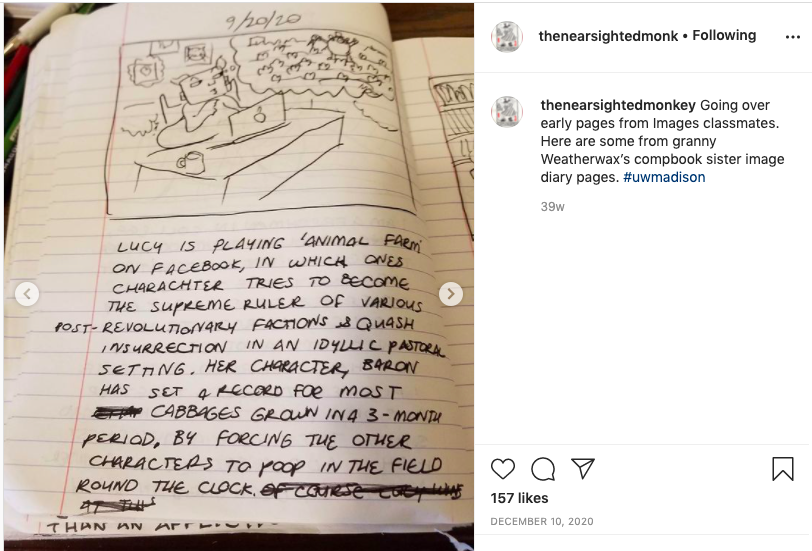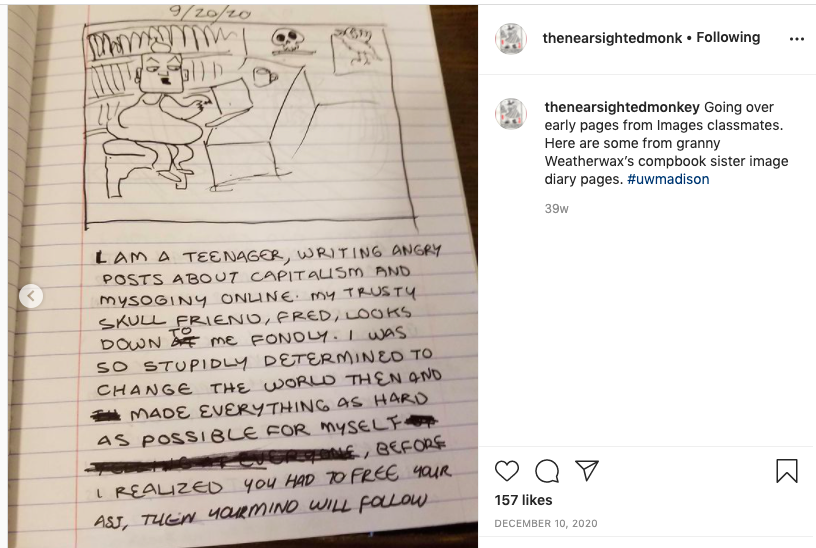[Most Recent Entries] [Calendar View]
Monday, September 20th, 2021
| Time | Event |
| 8:00a | How England First Became England: An Animated History Once you pay the Danegeld, you never get rid of the Dane. So discovered the rulers of the kings of the Anglo-Saxon era, during which England became subject to the threat of Viking invasions. It wasn’t, of course, the England we know today, but it wasn’t exactly not the England we know today either. The fact of the matter, according to the animated Knowledgia video above, is that England didn’t take its full form until 927 A.D.. In ten minutes, it goes on to encapsulate what happened in the foregoing century and a half to make England as we know it a viable geographical and political entity — a process that wasn’t without its complications. “As the Roman Empire began to fade from the British isles,” explains the video’s narrator, “the area of modern-day England started to see a wave of migration from Anglo-Saxon Germanic tribes.” Then came attacks from the other direction, mounted by the Picts and Scots, whom the Germanic peoples eventually expelled — before taking power from the native Britons themselves. After a few centuries of division into various Anglo-Saxon kingdoms, along came the Vikings. By the year 875, only the kingdom of Wessex hadn’t been overtaken by the Danes. Its king, Alfred, started the custom of paying them off before engaging and finally defeating them in the Battle of Edington. The following generations of rulers of Wessex and the retaken kingdom of Mercia pushed north, taking back territory from the Danes a piece at at time. It was Æthelstan, who ruled from 925 to 939, who finally made it all the way up through Northumbria. “This is generally the time that most historians view the Kingdom of England as having been created,” but Æthelstan’s domain “was still not quite what we know as England today.” The king’s 937 invasion of Scotland, culminating in his victory in the Battle of Brunanburh, “may have truly solidified the unity of England, and stirred up a new sense of nationalism and pride amongst the English people.” Not that the troubles ended there. After Æthelstan’s death, the Vikings returned to do a bit of reconquering, subsequently un-reconquered by the English under Edmund. Later came Eric Bloodaxe of Norway, who made inroads into England as fearsomely as his name would suggest, only to lose his conquered territories to the locals. The bloody conflicts involved in all this didn’t come to a pause until the reign of the aptly named Edgar the Peaceful, which began in late 959. Under Edgar “the true foundations of the English kingdoms could finally be established,” and he passed many reforms — but made sure to uphold the Danish law where it had been established. If recent history had offered any lesson, it was that one should never upset the Danes. Related Content: The Entire History of the British Isles Animated: 42,000 BCE to Today Watch the Rise and Fall of the British Empire in an Animated Time-Lapse Map (519 A.D. to 2014 A.D.) The Roman Roads of Britain Visualized as a Subway Map The Evolution of London: 2,000 Years of Change Animated in 7 Minutes The Difference Between the United Kingdom, Great Britain and England: A (Pre-Brexit) Video Explains The History of the English Language in Ten Animated Minutes Based in Seoul, Colin Marshall writes and broadcasts on cities, language, and culture. His projects include the Substack newsletter Books on Cities, the book The Stateless City: a Walk through 21st-Century Los Angeles and the video series The City in Cinema. Follow him on Twitter at @colinmarshall or on Facebook. How England First Became England: An Animated History is a post from: Open Culture. Follow us on Facebook and Twitter, or get our Daily Email. And don't miss our big collections of Free Online Courses, Free Online Movies, Free eBooks, Free Audio Books, Free Foreign Language Lessons, and MOOCs. |
| 8:00a | The Recording Secrets of Nirvana’s Nevermind Revealed by Producer Butch Vig
The pop cultural phenomenon of Nirvana’s Nevermind caught everyone involved by surprise — from the band, to the label, to Butch Vig, just then making a name for himself as a 90s alt-rock superproducer by releasing Nevermind and Smashing Pumpkin’s Gish the same year and helping define the sound of guitar rock for the 90s. “It was perfect timing coming out when there was a shift in music and it felt like a revolution,” Vig tells Spin. “Despite being a great record, it would not have the same cultural impact” if it were released today. Vig offers a few reasons why it’s difficult for an album to have the same influence. “Everything is so instant that it’s hard to build up some mystique. When you really want something but can’t quite get your hands on it, that makes it all the more powerful.” Fans could eventually get their hands on the album without much trouble in 1991. (Geffen originally shipped only 46,521 copies in the U.S. in anticipation of low sales); but they couldn’t get enough of Kurt Cobain, who became a commodity before social media turned everyone into an aspiring commodity, a role contemporary stars like Billie Eilish now talk about openly in terms of the toll it takes on mental health. Revisiting Nevermind on its 30th anniversary offers an occasion to discuss what made the album, the band, and Cobain so majorly appealing at the time. It also gives us a chance to talk about what happens when media companies and record labels seize on a unique event and drive it right into the ground. These are worthwhile discussions, but if we’re talking to Butch Vig — superproducer and founder and drummer of 90s juggernaut Garbage — our time is better spent asking the question he’s best poised to answer: what, exactly, made Nevermind such a great album? What did Vig hear behind the mixing desk that has so captivated listeners for 30 years? In the videos here, you can see Vig — with commentary from surviving Nirvana members Krist Novoselic and Dave Grohl — demonstrate how several tracks came together, and how he enhanced and expanded the sound of the trio without needing to do much to make them sound absolutely huge. As he tells Kerrang in a recent interview, when the band first hired him:
The magic was always in the songs, whether captured on a boom box or the studio gear of Geffen records after the band left their indie label Sub Pop. (It’s worth listening to the Sub Pop founders tell their story on the How I Built This podcast.) Hear Vig talk about how he bottled it above, and see more of his Nevermind making-of production videos here. Related Content: Josh Jones is a writer and musician based in Durham, NC. Follow him at @jdmagness The Recording Secrets of Nirvana’s Nevermind Revealed by Producer Butch Vig is a post from: Open Culture. Follow us on Facebook and Twitter, or get our Daily Email. And don't miss our big collections of Free Online Courses, Free Online Movies, Free eBooks, Free Audio Books, Free Foreign Language Lessons, and MOOCs. |
| 2:00p | Cartoonist Lynda Barry Teaches You How to Make a Visual Daily Diary Cartoonist and educator Lynda Barry is a favorite here at Open Culture. We’re always excited to share exercises from her books and intel on her classes at the University of Wisconsin, but nothing beats the warmth and humor of her live instruction… even when it’s delivered virtually. Last week, she took to Instagram to inform the fourteen lucky U of W students enrolled in her fall Making Comics class to prepare for a new way of keeping their required daily diaries, using a technique she calls “sister images.” Those of us at home can play along, above. Grab a composition book, or two blank sheets of paper, and a black felt tip pen. (Eventually you’ll need a timer, but not today.) Rather than describe the ten-minute writing and drawing exercise in advance, we encourage you to jump right in, confident that teacher Barry would approve. There are plenty of resources out there for those who want to learn how to outline, script, and storyboard comics. Barry aims to tap a deeper vein of creativity with exercises that help students embrace the unknown. The sister diary’s purpose, she says, is to “let our hands lead the way in terms of figuring out our stories.” Whether or not you seek to make comics, it’s an engaging way to document your life. You can also implement the sister diary technique for discovering more about characters in your fictional work. You’ll also pick up some bonus tips on drawing backgrounds, using all caps, allotting enough space within a panel for full body renderings, and staying in the moment should you find yourself at a temporary loss.
Related Content: Watch Cartoonist Lynda Barry’s Two-Hour Drawing Workshop Cartoonist Lynda Barry Teaches You How to Draw Ayun Halliday is an author, illustrator, theater maker and Chief Primatologist of the East Village Inky zine. Follow her @AyunHalliday Cartoonist Lynda Barry Teaches You How to Make a Visual Daily Diary is a post from: Open Culture. Follow us on Facebook and Twitter, or get our Daily Email. And don't miss our big collections of Free Online Courses, Free Online Movies, Free eBooks, Free Audio Books, Free Foreign Language Lessons, and MOOCs. |
| << Previous Day |
2021/09/20 [Calendar] |
Next Day >> |







